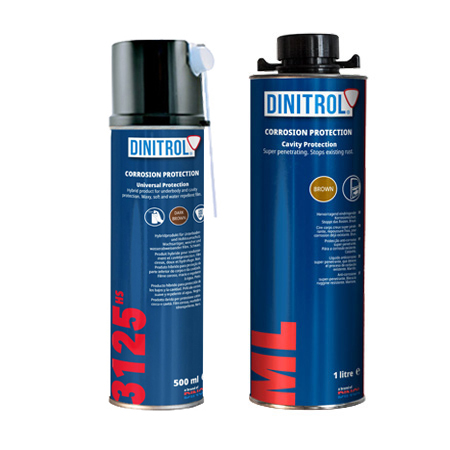Posted by Rejel on 24th May 2024
How to protect your classic car this spring
As the weather warms up, we return to the age old question of whether or not to apply an underbody rust protection to your car. The consensus appears to be that it depends on the make of car, types of road most frequently driven and surrounding climatic conditions. Classic car owners in general agree, without much debate that underbody rust protection is a necessary process to avoid high costs of treating rust and replacing corroded parts.
The underbody isn't the only area that needs rust protection. The seams and wheel wells are also vulnerable to the onset of corrosion particularly in the winter months when many UK roads are gritted.
Any classic car owner who has restored their dream vehicle will share the huge amount of satisfaction felt once the project is complete. Car restoration, as many will confess involves a lot of time, dedication, commitment and organisation on a car you hope doesn't disappoint. Planning and having the right tools are critical to a successful outcome. The restoration process involves cleaning, replacing and repairing including attention to the underbody - the unseen area that won't thrill but is critical to the safety and longevity of any car. They know that is worth the effort to avoid the risk of costly outcomes.
Applying underbody rust protection
Underbody rust proofing provides a protective layer which only lasts for a few years with suggested reapplication every 3-5 years. This treatment procedure involves the car being degreased and washed to remove dirt and loose particles from the underside. Any signs of corrosion are first treated with a rust converter (Dinitrol RC800 or Dinitrol RC900 rust converter) . Next apply a liberal coating of rust prevention wax to the underside. A lance should be used to add protection inside the chassis rails and under body cavities.
Once the rust converter application has cured overnight, apply a penetrating cavity wax - Dinitrol ML3125. If the ambient air temperature is low, you’ll need to warm the can of Dinitrol ML3125 in a bucket of hot water, for 15 - 20 minutes. This wax is designed to creep and flow into the smallest of cracks, welds and seams offering further protection to the chassis.
Finally, apply Dinitrol 4941 underbody wax, which forms a black, hard and waxy film which will protect the layer of ML wax underneath and provide a professional factory finish. Dinitrol 4941 offers long term resistance against corrosion and abrasion even under severe conditions. It also gives a tough elastic waxy protective coating.
Factory applied underbody rust protection isn't always as comprehensive as it could be and for older cars it should be a process under taken every few years not just as part of a restoration process. Hope you have found these few steps useful.

